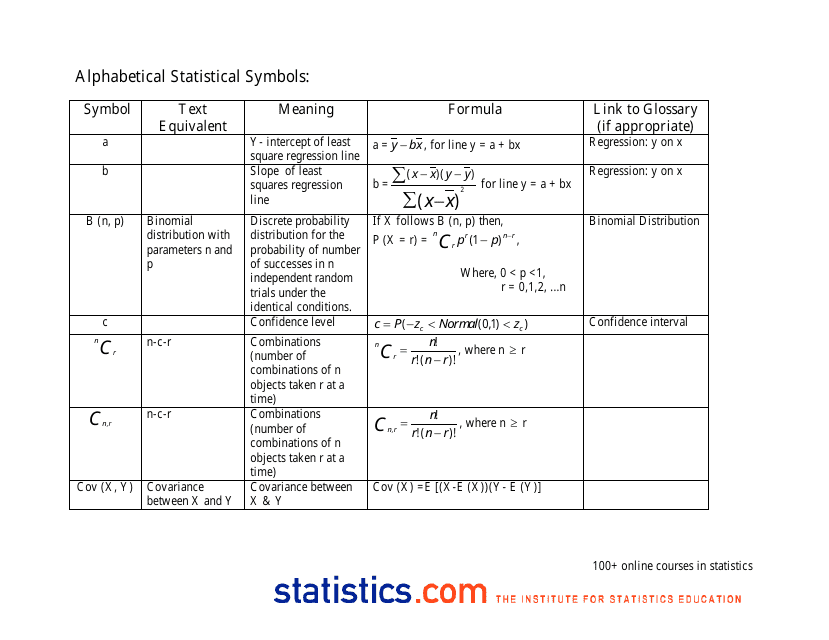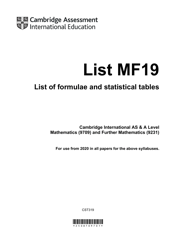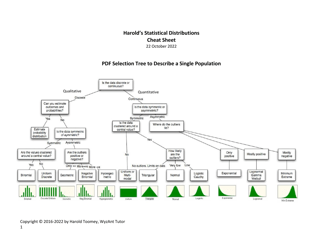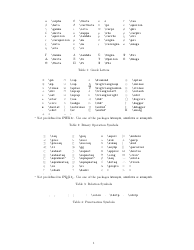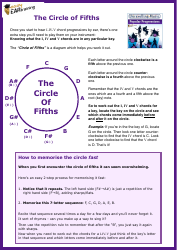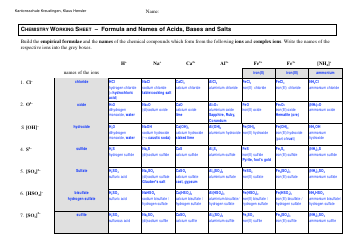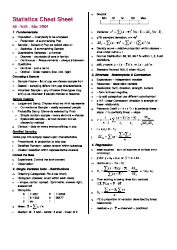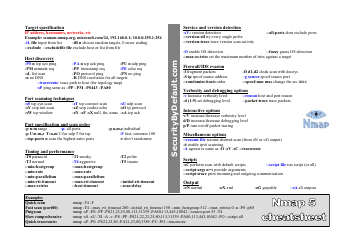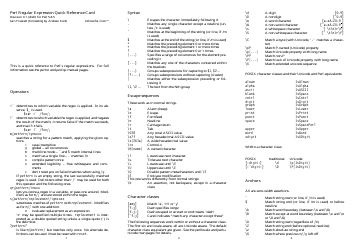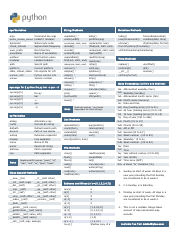Alphabetical Statistical Symbols Cheat Sheet
The Alphabetical Statistical Symbols Cheat Sheet is a document that provides a quick reference guide for statistical symbols used in data analysis and interpretation. It helps users understand and interpret statistical information in various fields such as mathematics, economics, and psychology.
FAQ
Q: What is a statistical symbol?
A: A statistical symbol represents a mathematical concept or operation used in statistics.
Q: What is the purpose of a cheat sheet for statistical symbols?
A: A cheat sheet for statistical symbols provides a quick reference guide to the various symbols used in statistics, making it easier to understand and interpret statistical formulas and equations.
Q: Why is it important to know alphabetical statistical symbols?
A: Knowing alphabetical statistical symbols is important for understanding and communicating statistical concepts, interpreting data, and performing statistical calculations.
Q: What are some common alphabetical statistical symbols?
A: Common alphabetical statistical symbols include alpha (α), beta (β), chi-square (χ²), delta (Δ), epsilon (ε), gamma (γ), mu (μ), sigma (σ), theta (θ), and z-score (z).
Q: How can I remember alphabetical statistical symbols?
A: To remember alphabetical statistical symbols, you can create mnemonic devices, practice using them in statistical problems, and refer to cheat sheets or resources for reinforcement.
Q: Are alphabetical statistical symbols universally standardized?
A: Yes, many alphabetical statistical symbols are universally standardized across statistics and mathematics disciplines, ensuring consistent and clear communication.
Q: Can I create my own statistical symbols?
A: While it is possible to create your own symbols for personal use, it is generally recommended to use established and standardized statistical symbols to maintain clarity and avoid confusion.
Q: Are there variations or alternative symbols for statistical concepts?
A: In some cases, variations or alternative symbols may exist for statistical concepts, depending on the specific field or context. It is important to consider the intended audience and consult relevant resources.
